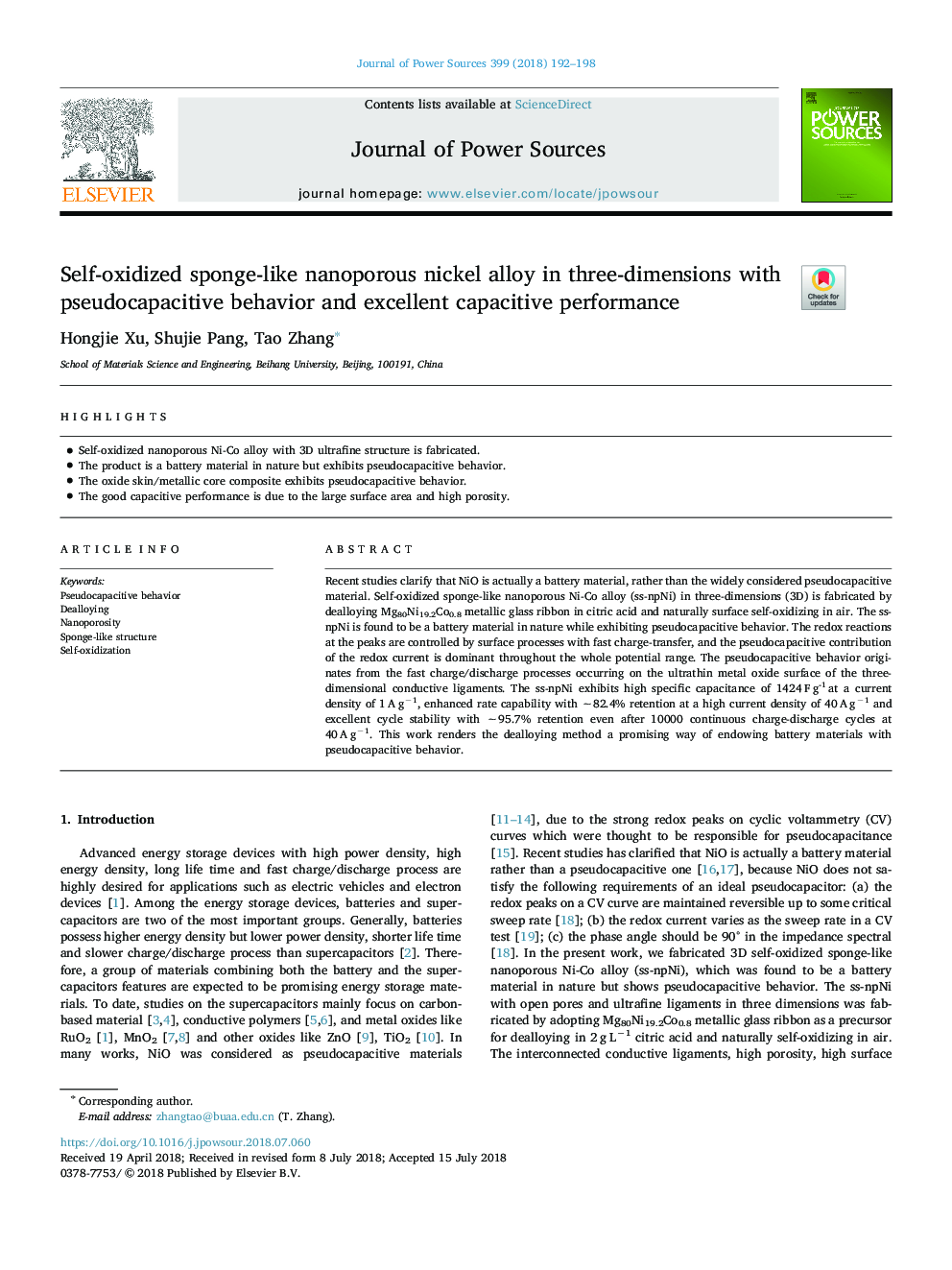| Article ID | Journal | Published Year | Pages | File Type |
|---|---|---|---|---|
| 7724772 | Journal of Power Sources | 2018 | 7 Pages |
Abstract
Recent studies clarify that NiO is actually a battery material, rather than the widely considered pseudocapacitive material. Self-oxidized sponge-like nanoporous Ni-Co alloy (ss-npNi) in three-dimensions (3D) is fabricated by dealloying Mg80Ni19.2Co0.8 metallic glass ribbon in citric acid and naturally surface self-oxidizing in air. The ss-npNi is found to be a battery material in nature while exhibiting pseudocapacitive behavior. The redox reactions at the peaks are controlled by surface processes with fast charge-transfer, and the pseudocapacitive contribution of the redox current is dominant throughout the whole potential range. The pseudocapacitive behavior originates from the fast charge/discharge processes occurring on the ultrathin metal oxide surface of the three-dimensional conductive ligaments. The ss-npNi exhibits high specific capacitance of 1424â¯Fâ¯g-1â¯at a current density of 1â¯Aâ¯gâ1, enhanced rate capability with â¼82.4% retention at a high current density of 40â¯Aâ¯gâ1 and excellent cycle stability with â¼95.7% retention even after 10000 continuous charge-discharge cycles at 40â¯Aâ¯gâ1. This work renders the dealloying method a promising way of endowing battery materials with pseudocapacitive behavior.
Related Topics
Physical Sciences and Engineering
Chemistry
Electrochemistry
Authors
Hongjie Xu, Shujie Pang, Tao Zhang,
